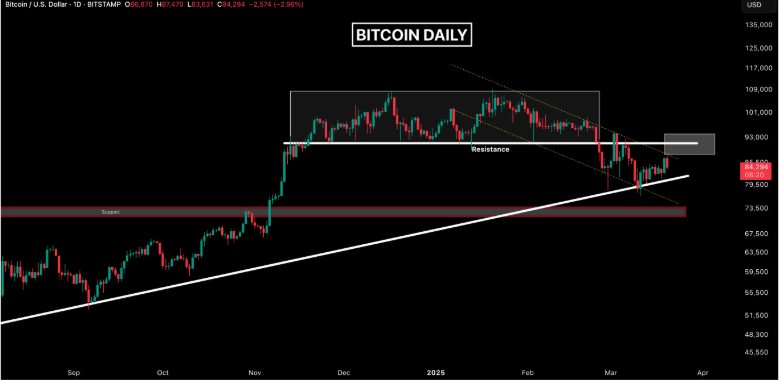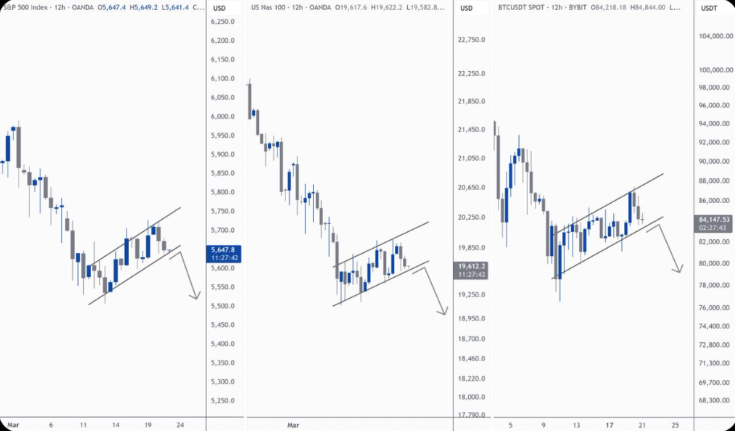- Bitcoin recover 14% from a four-month low but is still 25% lower than its all-time high.
- Analysts predict more drops if Bitcoin is unable to remain above the key support levels.
- Investor confidece and equity trends are affecting the price action of Bitcoin.
Bitcoin recover from 14% after it fell to a four-month low of approximately $76,600. It is still down around 25% from its all-time high of $110,000.
Some analysts view this as a natural correction in a bull market, while others think the price will continue to decline.
Bitcoin recover was subjected to strong selling pressure after it failed to remain above $87,470, where it encountered resistance. A “dark cloud cover” pattern was formed, which showed that a downtrend was possible as the buyers were not able to push the price higher.
According to an analysis,

Source: TradingView
Important Price Zones
Bitcoin recover also could not breach the crucial $90,000-$93,000 level, indicating poor buying strength. Experts opine that unless Bitcoin crosses above this region, it may remain under bearish pressure.
CrediBULL Crypto noted that Bitcoin was denied at the $86,000-$88,000 supply area, so it is more probable to test the $77,000-$79,000 support zone. Bouncing from this area in the past has resulted in good price recoveries, but if this does not happen this time, Bitcoin could slide further to $65,000-$74,000 by April.
Market trends also show that Bitcoin is closely following traditional stocks like the S&P 500 and Nasdaq 100, which are forming bearish patterns. A “bear flag” pattern in Bitcoin’s price action has formed, where $84,000 serves as the point of decisive support.
If the price dips below this, another decline towards $72,000 is imminent. Technical indicators reveal that Bitcoin’s price action is tracking stock market trends, enhancing the possibility of sustained downward pressure.

Outside Influences on Bitcoin recover
Another weight on Bitcoin’s price is a loss of investor confidence. Overall market sentiment has been influenced by US President Donald Trump’s foreign trade policies, and investors have shifted away from risky assets.
This has placed further pressure on Bitcoin and other cryptocurrencies. Analysts indicate that unless market confidence increases, Bitcoin may continue to struggle.
Arthur Breitman, a co-founder of Tezos, has noted that a possible US recession is one of the biggest threats to the crypto market.
Economic uncertainty would further affect Bitcoin’s price. Although short-term price action is unpredictable, experts think that Bitcoin must maintain significant support levels in order not to see a deeper correction. If Bitcoin is able to regain momentum above resistance levels, it can switch back to an upward trend.
Also Read: Shiba Inu Targets Breakout as Transactions and Burn Rate Surge



